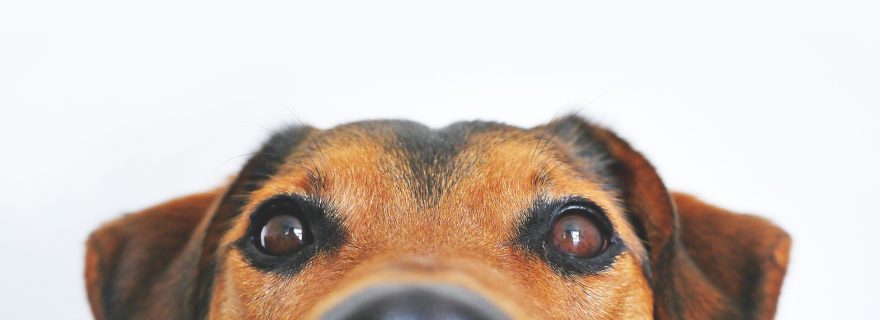How a staring contest with your dog can improve your human-dog-bond
Human-dog-bonds sometimes seem to be comparable to human relationships. A reason for this could be that dogs copy our human communication style, which makes us even love them more. So what exactly do they do and how can you improve your bond with your dog?
„A dog is a man‘s best friend“. This popular saying is older than 200 years and still valid today. How often do we come home after an exhausting day and basically want to do nothing besides grabbing something to eat, lay down on the couch and watch Netflix till we fall asleep. And how often is it that a cold and wet dog’s nose makes us feel happier and more comfortable than any other human being ever could?
A possible reason for this phenomenon has to do with a hormone called oxytocin. Maybe you’ve heard about it under the name „love hormone“, „cuddle hormone“ or - the least romantic version - „sex hormone“. This hormone is basically involved in all good relationships we have. It plays a role in healthy mother-childrelationships as well as in relationships between sexual partners. Furthermore, it helps us cope with stress as the release of oxytocin inhibits stress-induced brain activity.
It is also known that gaze plays a big role in human relations. In mother-child-relationships mutual gaze shows social attachment and the more oxytocin is present in the mother’s brain the longer this mutual gaze lasts. So gaze establishes affiliative relations with others through activating the oxytocin system. And this is exactly where the puppy dog eyes come in. It seems that during domestication, dogs adapted to their human companions and copied some aspects of our style of communication: gazing. This made them able to use mutual gaze as a communication tool, for example when they need affiliative help from others.
In an inventive study researchers from different Japanese universities got together to study the role of oxytocin and gaze in human-dog-relationships. They found that the longer a dog gazes at its owner, the higher oxytocin levels are. Further, they found that touching their dog leads to an increase in oxytocin in the owner as well as the dog itself. So there seems to be a positive loop: when your dog looks at you, the oxytocin levels in your brain rise which then leads to more gazing from you towards your dog. As a consequence, more oxytocin is available in our dog's brain what in turn leads to more gazing from your dog... A happy loop!
In their study, the researchers also administered oxytocin to dogs and compared them to dogs in a control group. Oxytocin only had an effect on female dogs that had been administered oxytocin: compared to male dogs and dogs in the control condition, they more often looked into their owners' eyes. As a consequence, there was an increase in the oxytocin levels of their owners and the happy loop started again. But is it surprising that this does not work with male dogs? Not really, as we know that there are also sex differences in humans. Women react differently to the administration of oxytocin than men and it could be that also in dogs, females are more sensitive to the effects of oxytocin than males. The researchers were also interested in answering the question of whether this positive loop is broken when the owner does not interact with his dog. This is indeed the case: through limited interaction an increased oxytocin secretion in the dog is prevented and the positive loop is interrupted.
In short, through dogs' usage of human-like communication styles – in this case gazing - the quality of human-dog-bonds is improved and in some aspects these bonds are even comparable to mother-child-relationships! There seems to be an oxytocin-mediated positive loop that is activated by gazing and that helped develop human-dog-bonding. So don't listen to the old advice “Never look in a dog's eyes”, but DO look your dog in the eyes!
Nagasawa, M., Mitsui, S., En, S., Ohtani, N., Ohta, M., Sakuma, Y., ... & Kikusui, T. (2015). Oxytocin-gaze positive loop and the coevolution of human-dog bonds. Science, 348(6232), 333-336.


1 Comment
Interesting, but this seems to be in contrast with what is often advised when interacting with dogs: Do not make eye contact with them because it is a sign of aggression.